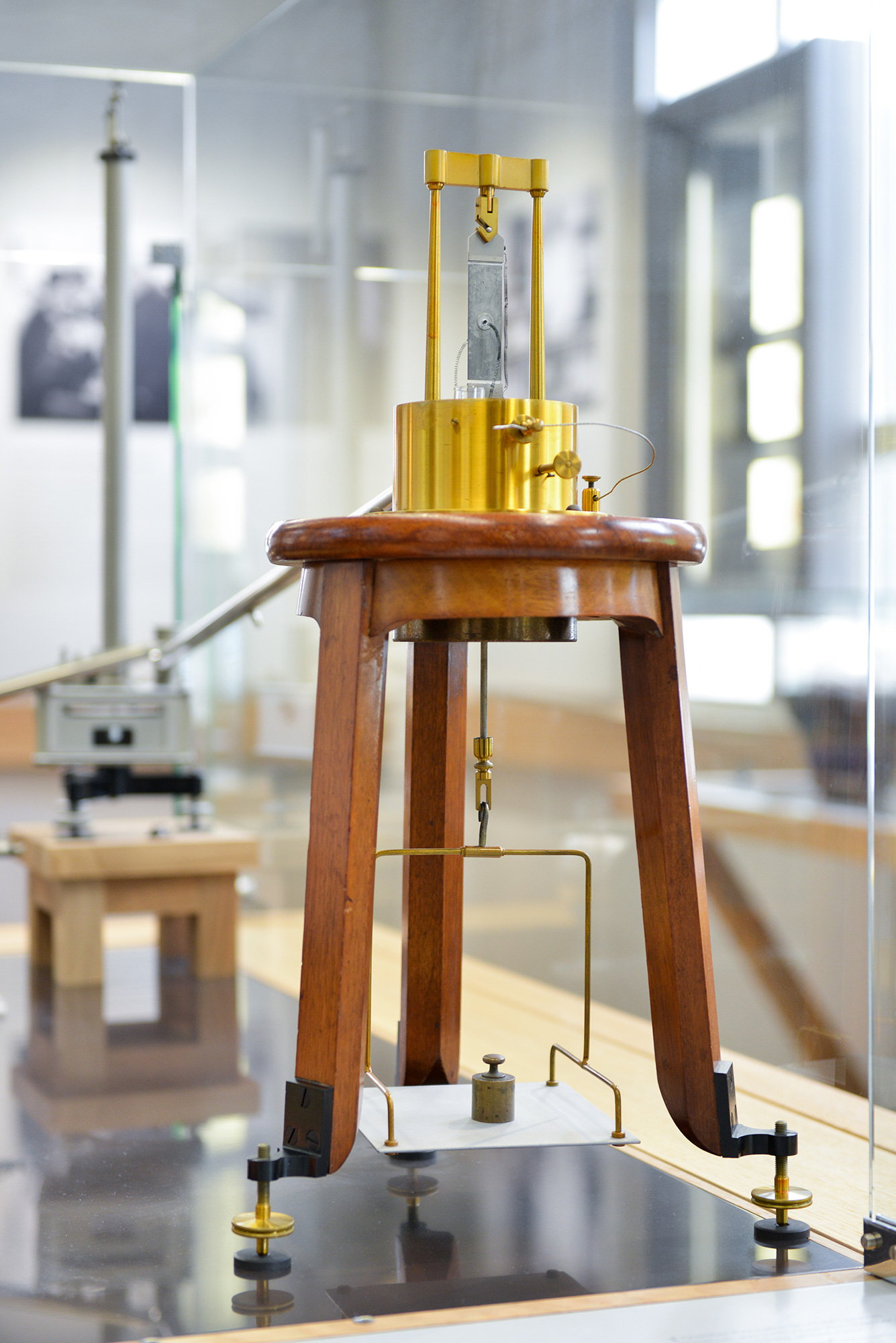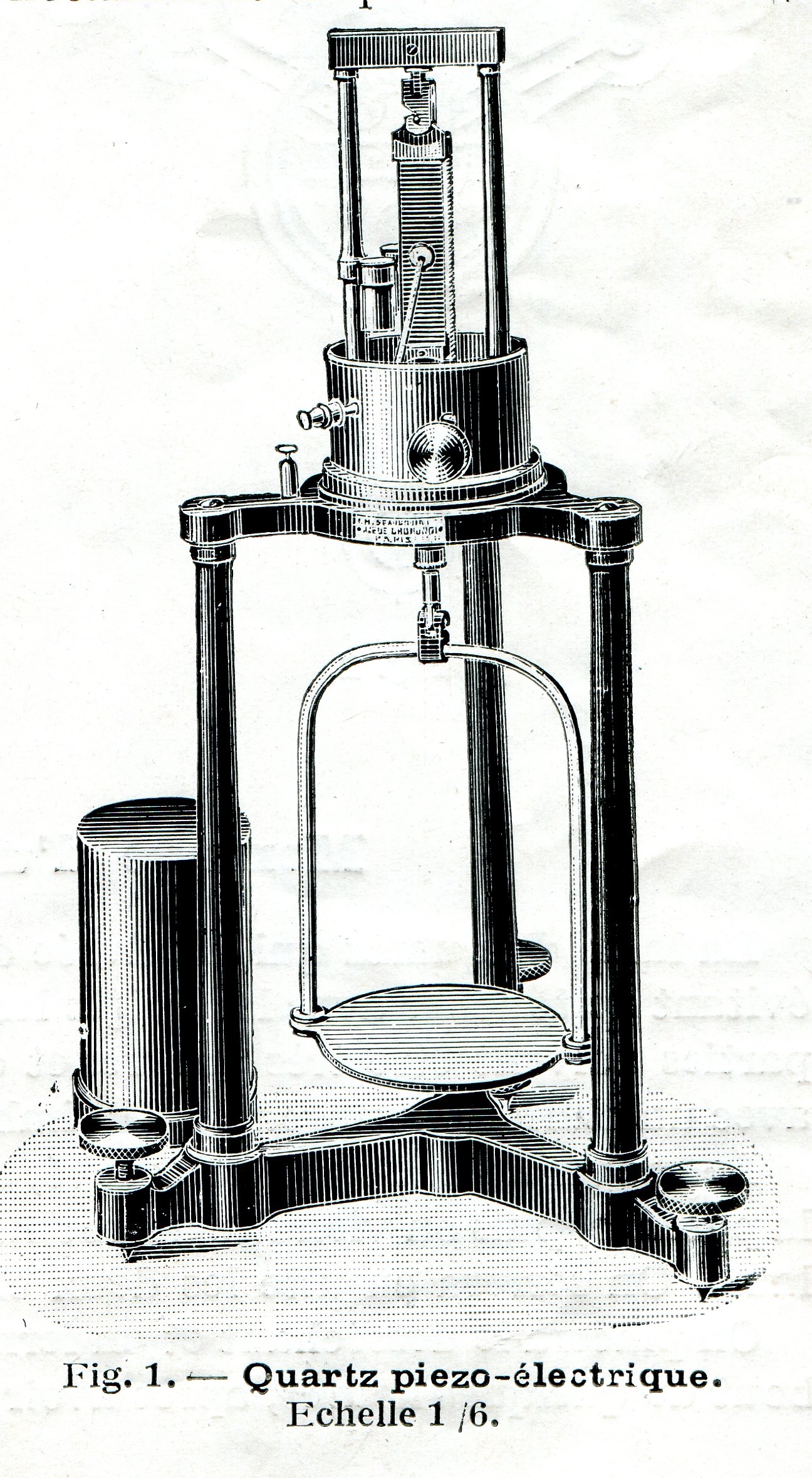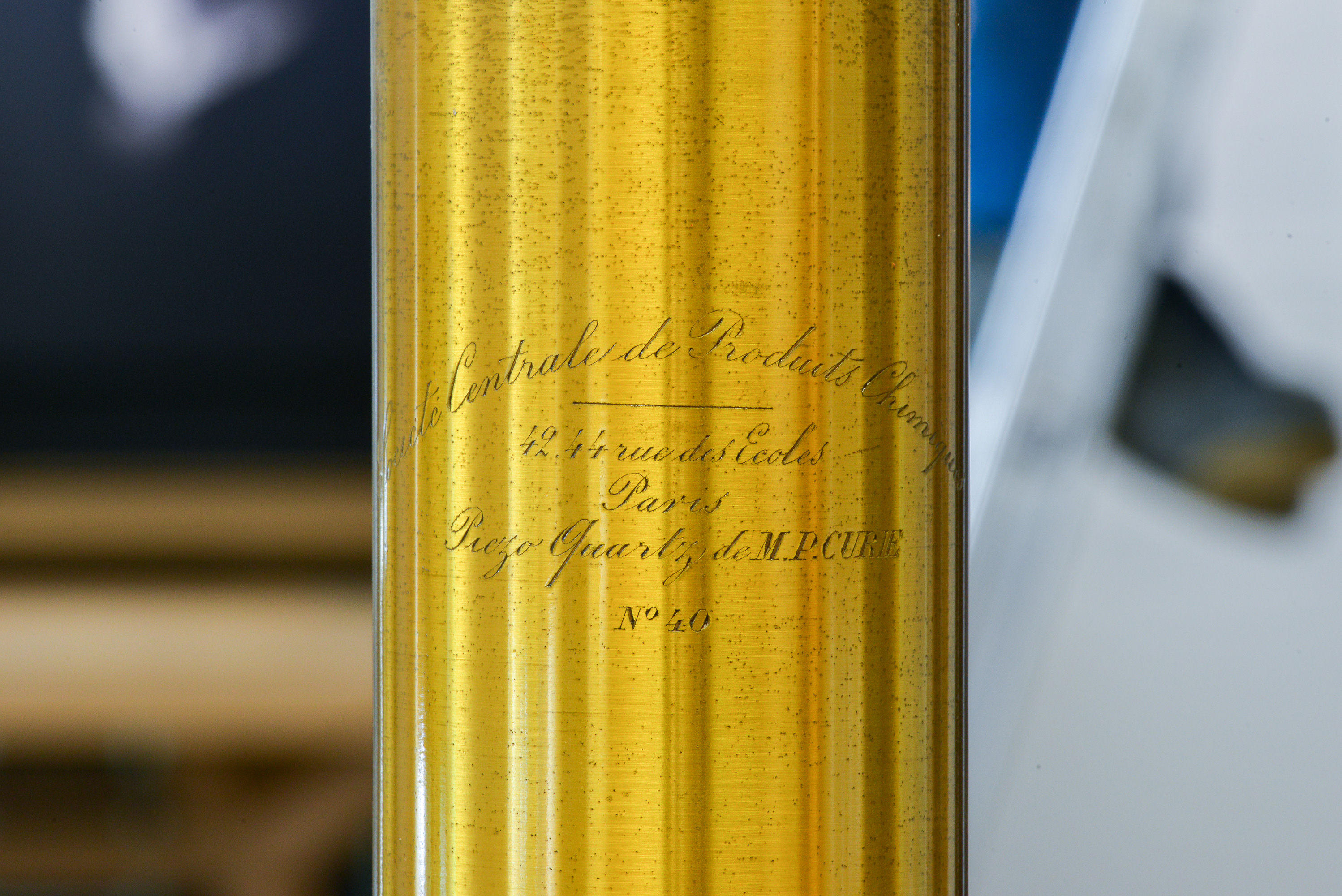
The piezoelectric effect is a property found in certain crystals, such as quartz and topaz, that emit small amounts of electricity when compressed or stretched. The name of the phenomenon comes from the Greek word piezein, which means to squeeze or press.
The brothers soon devised several applications for piezoelectricity. In 1885, they constructed an instrument for their laboratory that they named very simply “piezoelectric quartz”. And the instrument’s operation was simple too: a slice of quartz was suspended by the top, while its bottom was attached to a plate. When a weight was placed on or removed from the plate, the slice of quartz was stretched or compressed, and emitted an electric charge via the piezoelectric effect. The electric charge emitted was measured by covering the slice of quartz with a thin layer of metal connected to a conductor cable. Depending on the dimensions of the slice and the weight used for the measurement, the electric charges produced could be predicted very accurately.

Jacques Curie recommended the use of piezoelectric quartz as the standard for all measurements of low electric charges. Marie and Pierre Curie would use Jacques’ method in their work on radioactivity starting in 1898 and perfecting their Curie method.
The piezoelectricity Jacques and Pierre Curie discovered still has many day-to-day applications in our modern times: in quartz watches, electric lighters and speakers, among other things. For watches and speakers, the converse piezoelectric effect is used. When an electric charge is sent to a piece of quartz, the quartz stretches, then compresses, then stretches again... this effect is called oscillation.





















